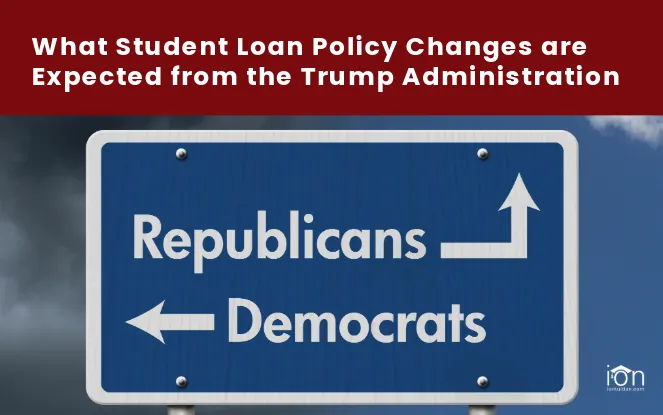The 2024 election has handed control of the White House and Senate to the Republican Party, with a potential GOP majority in the U.S. House of Representatives. The incoming administration is expected to introduce federal student loan policy changes to undo forgiveness initiatives and replace existing repayment plans. Here’s a look at what is expected.
Mass Student Loan Forgiveness Is Unlikely
The Biden administration has provided over $160 billion in loan forgiveness to over 4.5 million borrowers under programs such as Public Service Loan Forgiveness and Income-Driven Repayment plans.
However, Biden’s attempts at sweeping student loan forgiveness have been blocked in court. Biden’s one-time mass relief of up to $20,000 was blocked by the Supreme Court in June of 2023.
The Biden administration’s Saving on a Value Education (SAVE) plan, which provided more generous terms than REPAYE, was also blocked by a GOP-led lawsuit.
Historically, Republicans have opposed large-scale forgiveness efforts. When Trump takes office, it’s widely expected that the SAVE plan will be eliminated or replaced.
A Simplified Income-Driven Repayment (IDR) Option
The College Cost Reduction Act (H.R. 6951) proposes overhauling federal student aid and loan repayment terms. Introduced in January of 2024 by Education and the Workforce Committee Chairwoman Virginia Foxx (R-NC), this proposed legislation would streamline repayment options for federal student loans, limiting new Direct Loans to just two plans: a Standard 10-year repayment option and a new income-driven repayment (IDR) plan based on 10 percent of the borrower’s annual income above 150 percent of the federal poverty line.
The new IDR plan is similar to the existing PAYE, but borrowers wouldn’t qualify for discharge until they have paid the entire principal and interest owed under the standard 10-year plan. Project 2025, a conservative policy agenda suggested for the next administration (but not yet endorsed by Trump), also suggests phasing out existing IDR plans and implementing a PAYE-like plan without loan forgiveness before 25 years. Project 2025 calls to “end time-based and occupation-based student loan forgiveness.”
Lending Limits and Reduced Role of the Office of Federal Student Aid
The College Cost Reduction Act also places a $50,000 ($23,000 of it subsidized) federal lending limit on undergraduate loans and a $100,000 Unsubsidized limit on graduate loans. These limits would likely require students to take on more private student loan debt, something that Project 2025 encourages.
Currently, the Department of Education oversees the Office of Federal Student Aid (FSA), and section 304 of the College Cost Reduction Act includes language about how federal and state laws often conflict, and that federal rules should take precedence.
Donald Trump’s formal policy plans state, “We are going to close the Department of Education in Washington, D.C. and send it back to the States, where it belongs, and let the States run our educational system as it should be run.” The Trump policy document doesn’t clarify who will run FSA if the Department of Education closes.
Borrowers Can Expect More Confusion Next Year
Student loan borrowers have faced uncertainty over their repayment since the start of the COVID-19 pandemic. Federal student loan payments were paused for over three years, from March 2020 to October 2023, with the payment pause end date extended eight times.
Even after repayment resumed, borrowers needed a one-year on-ramp period to navigate the changes to loan servicers, several of which terminated their contracts. Many servicers struggled to keep up with demand. Additionally, borrowers were promised sweeping student loan forgiveness multiple times, which discouraged them from making payments.
Any administration change creates confusion for borrowers, which is why IonTuition is crucial for schools. We help borrowers stay on top of student loan policy changes and guide them into any new repayment plans that may arise. Put your default aversion plan into place today to give your borrowers time to adapt to the changing environment.

